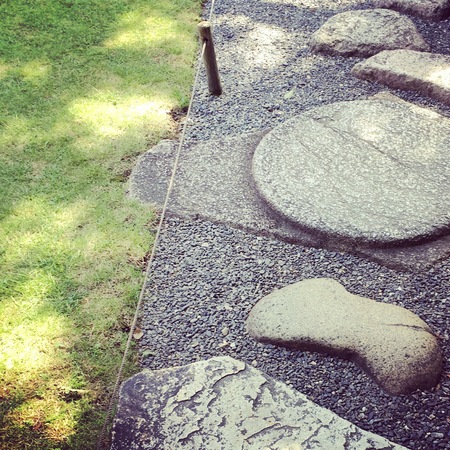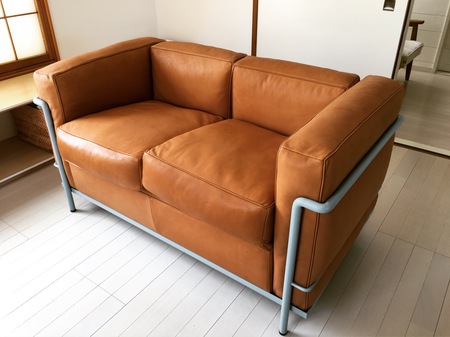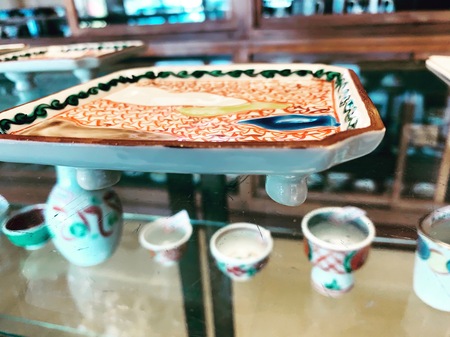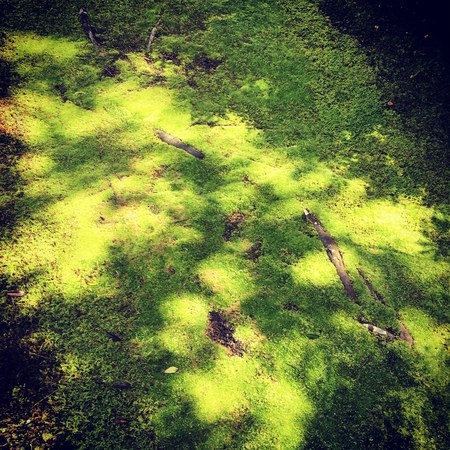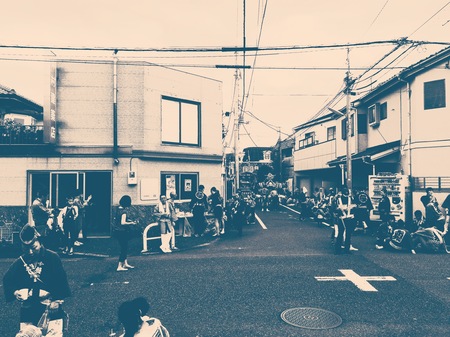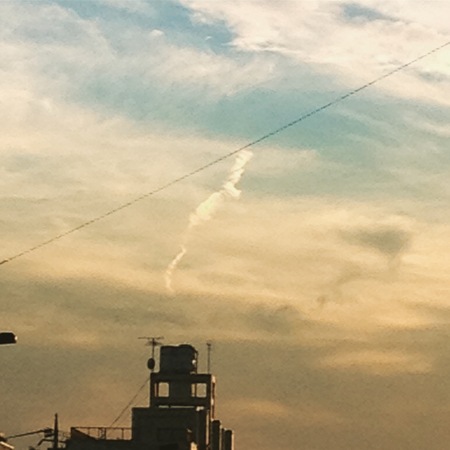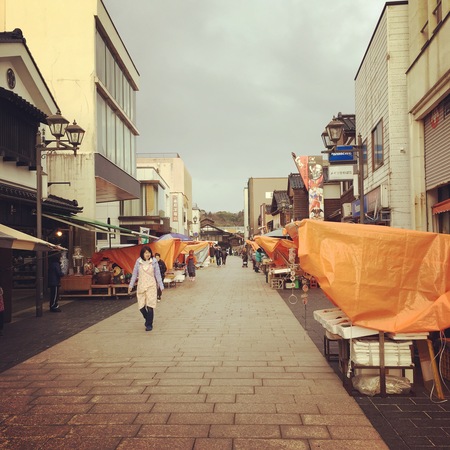建築の感触vol.4
見た目の感触に既視感が無い状態とは、見た目の感触と実際に触った時の感触との間に違和感がある状態では無く、そのモノの過去の経験から推測する感触とは違うように見えることでも無いような気がする。
見た目の感触に既視感が無いことと、見た目に既視感が無いことは、同じか、違うのか。
見た目に既視感が無い状態は、例えば、一見するとコンクリート打放しのような壁に見えるが、そこにモルタルの薄塗りがかけてあり、よく見るとコンクリート打放しでは無いということ。
モルタルが仕上げの壁をあまり見ることが無いから、既視感が無いとなる訳だが、それはコンクリート打放しのように見えるから既視感が無いことにつながる。この場合、コンクリートとモルタルの感触に大した差は無いし、感触の違いまで範疇に入っていない。
感触とは、そのモノの性質によるから、見た目で受け取る情報の中に含まれていて、無意識にどのような感触かを判断しているはずだが、まずは見ることで、触れるかどうか定かでは無い状態では、感触が意識に上がって来ないのかもしれない。
だから、見た目の感触に既視感が無い状態は、感触が意識に上がって来ているので、その点で言えば、見た目に既視感が無い状態とは違うことになる。
では、触れないのに見た目で感触まで意識する状態とは、どのようなコトなのだろうか。
思い付いた例は、茶室に向かう露地の苔を見た時、ふわふわの感触を意識して、踏んではいけないと思う。また、茶室の中で見る花は、花弁の感触まで意識してしまう。いずれも触れてはいけないから、見た目で感触まで意識していることになる。
どうしてだろうか、非日常的な行為だからか、そもそも茶道がそのような感触までを意識するように設えてあるからか。
触れないのに見た目で感触まで意識する状態を意図的につくり出すことができれば、それに対して既視感が無いようにすれば良いのだが。
"Feel of architecture vol.4"
A state where there is no sense of visual impression on the appearance feeling is not a state in which there is a feeling of strangeness between the appearance feel and the feel at the time of actually touching, different from the feeling estimated from the past experience of the thing I feel that it is not even visible.
Is there a feeling of visual appearance in the appearance feeling is not the same as or difference in appearance is not the same as it looks?
For example, at first glance it looks like a wall like a concrete release, but a thin coating of mortar is put on it, and it is not concrete release as you look closely.
Since the mortar does not see much of the wall of the finish, it is a case that there is no sense of deja vu, but since it looks like a concrete release, it leads to lack of a sense of deceit. In this case, the feel of concrete and mortar is not much different, and it does not belong to the range of feel to the touch.
Since the feeling is based on the nature of the thing, it is included in the information received in the appearance, and it should be judged what kind of feeling unconsciously is, but first it is not clear whether to touch or not Then, the feel may not come up to consciousness.
So, in a state where there is no sense of visual impression on the appearance feeling, since the feeling has come up to consciousness, in that respect, it will be different from the state where there is no pre-existing sense of appearance.
So, what kind of condition is it that you are aware of your appearance and feel, without touching it?
When thinking of an example that I saw the moss on the open ground towards the tea room, I think that I should not be stepping on with the feeling of fluffy. Also, the flowers seen in the tea room conscious of the feel of petals. Since neither can be touched, it will be conscious of the appearance and the feeling.
Is it because of what it is, because it is an extraordinary act, or because the tea ceremony has been set up to be aware of such a feeling in the first place?
If it is possible to intentionally create a state that is conscious of the appearance and feel until it is not touched, it should be done so that there is no sense of deceit.

